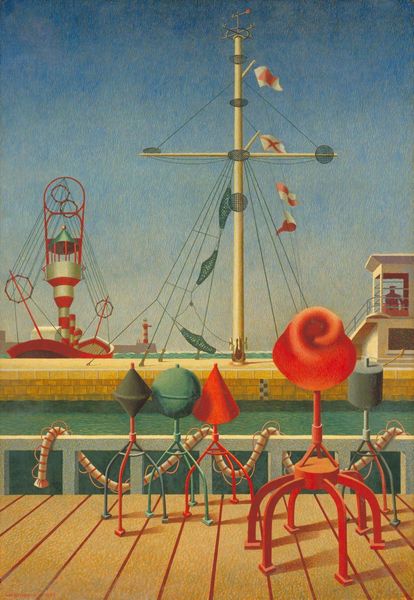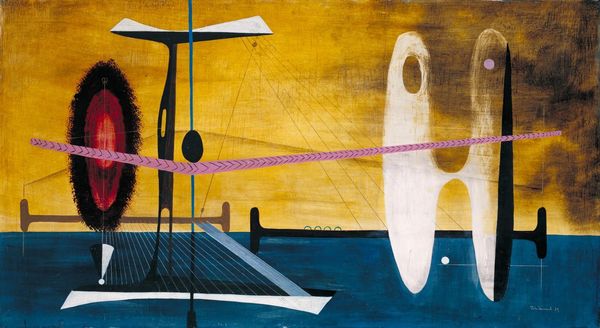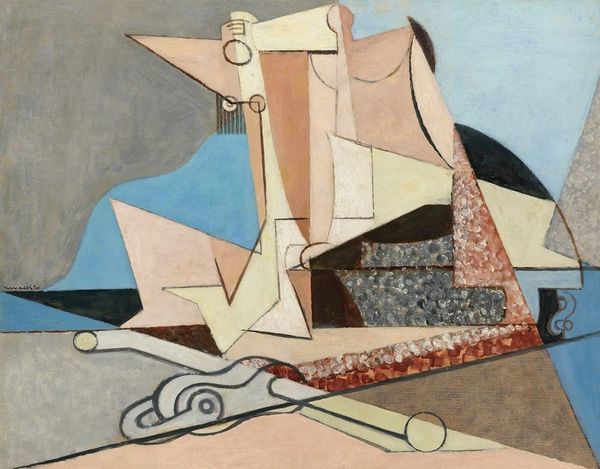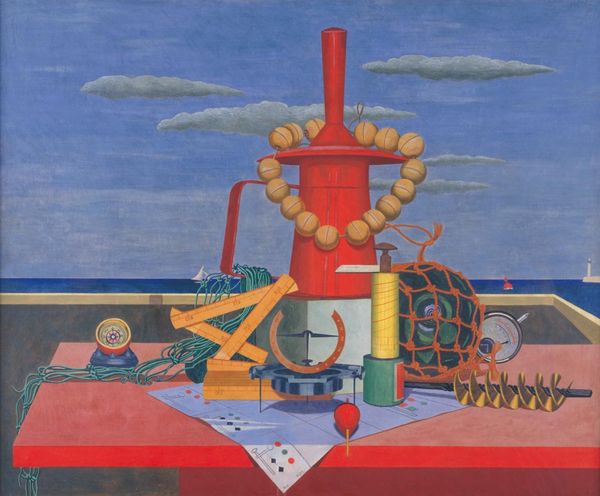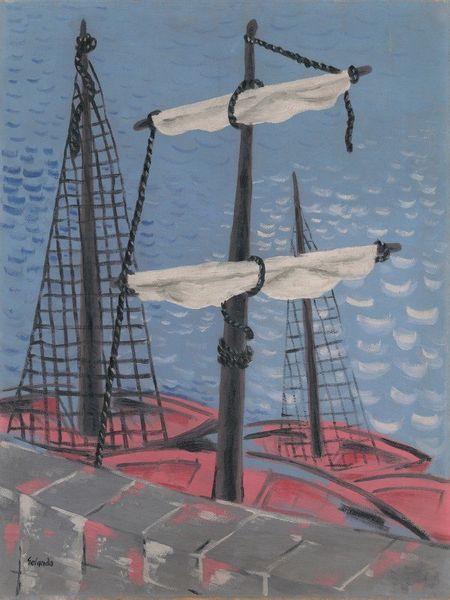
Dimensions: support: 711 x 1016 mm frame: 910 x 1215 x 85 mm
Copyright: © Tate | CC-BY-NC-ND 4.0 DEED, Photo: Tate
Editor: Here we have Edward Wadsworth’s painting, "The Beached Margin," currently at the Tate. It's striking how these angular shapes and nautical objects create a sense of unsettling stillness. What do you make of this piece? Curator: This work, like much of Wadsworth's post-war output, speaks to a cultural reckoning. The rigid geometry and abstracted forms—consider the fragmented starfish—can be read as a commentary on the fractured state of society after the First World War. Editor: So, you see the geometric forms as a reflection of societal fragmentation? Curator: Precisely. There's a deliberate obscuring of function and a disruption of traditional representation. This challenges us to consider how systems of power and social order were being questioned. What does the industrial aesthetic evoke for you? Editor: I hadn't thought about it in terms of power. Seeing it now, I understand the painting has a visual language for social change.
Comments
tate 7 months ago
⋮
http://www.tate.org.uk/art/artworks/wadsworth-the-beached-margin-n04935
Join the conversation
Join millions of artists and users on Artera today and experience the ultimate creative platform.
tate 7 months ago
⋮
With its unexpected juxtapositions and shifts in scale, and its precise tempera technique, The Beached Margin is typical of Wadsworth’s still lifes. Although never a Surrealist, his paintings incorporated disconcerting imagery that related to the work of de Chirico. Widely travelled, Wadsworth was better informed than most British artists about developments in the Continental art world. In the early 1930s he joined Unit One, a group of artists and architects who were determined to bring Modernism into British culture. Gallery label, April 2010
